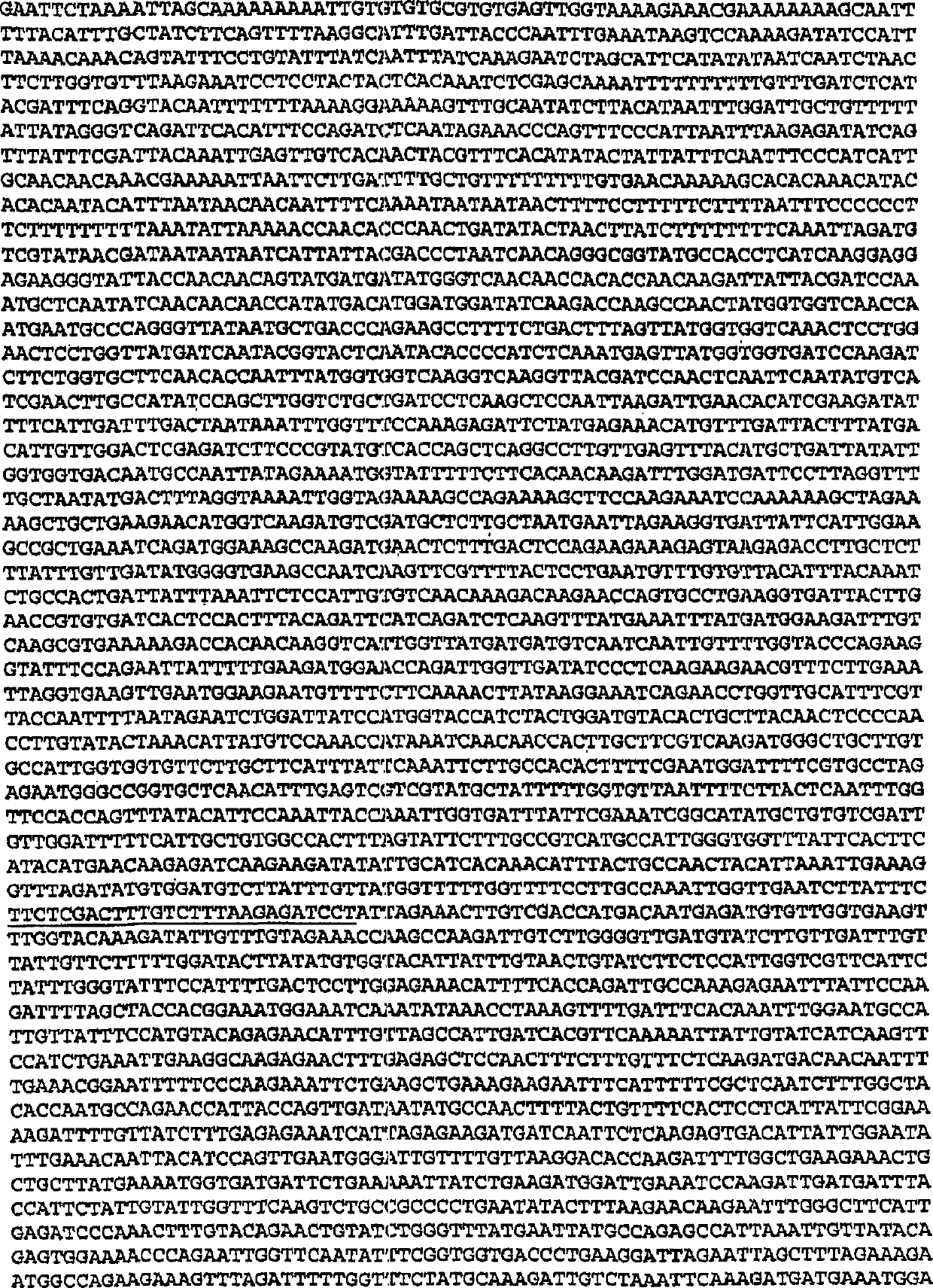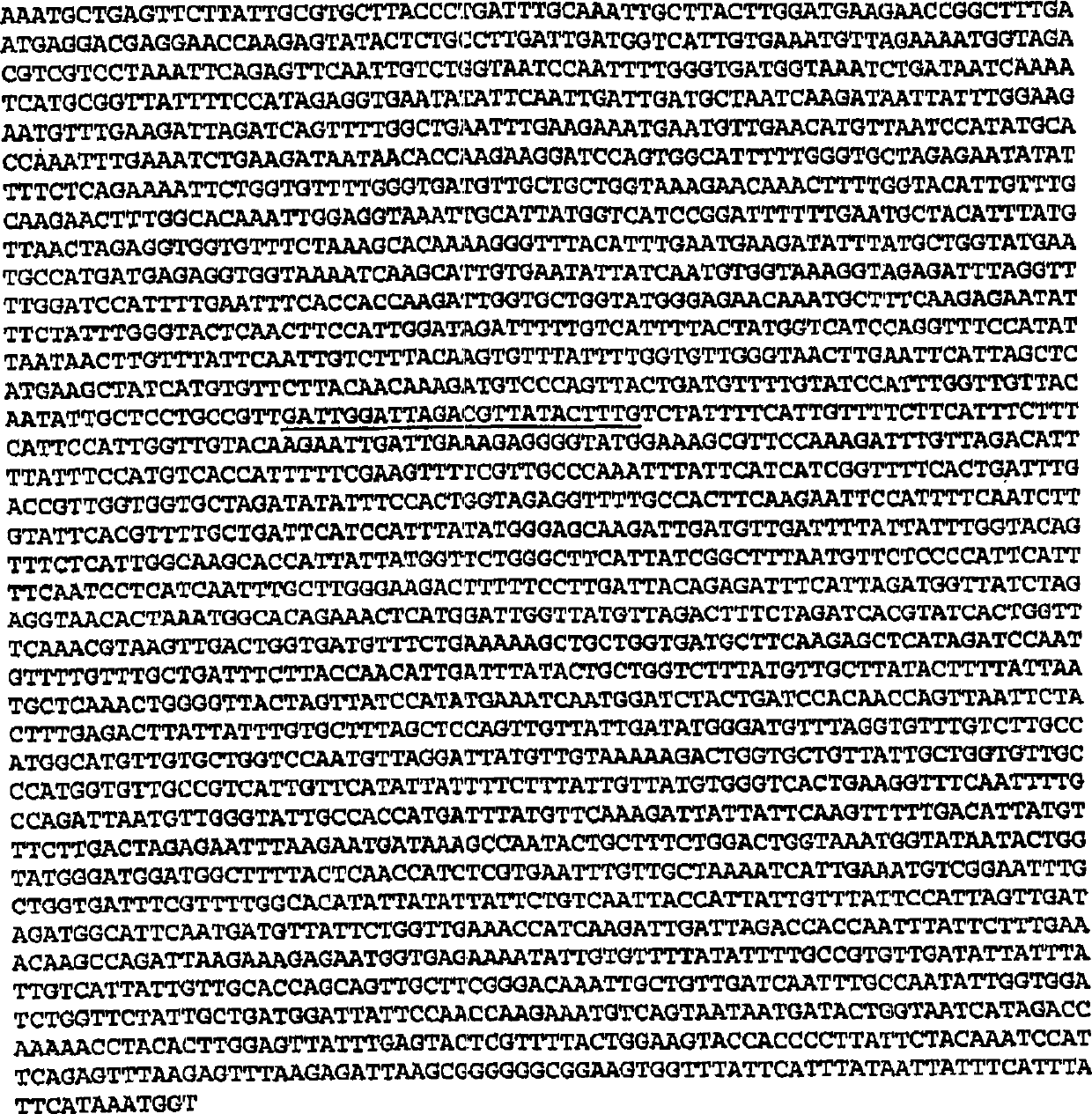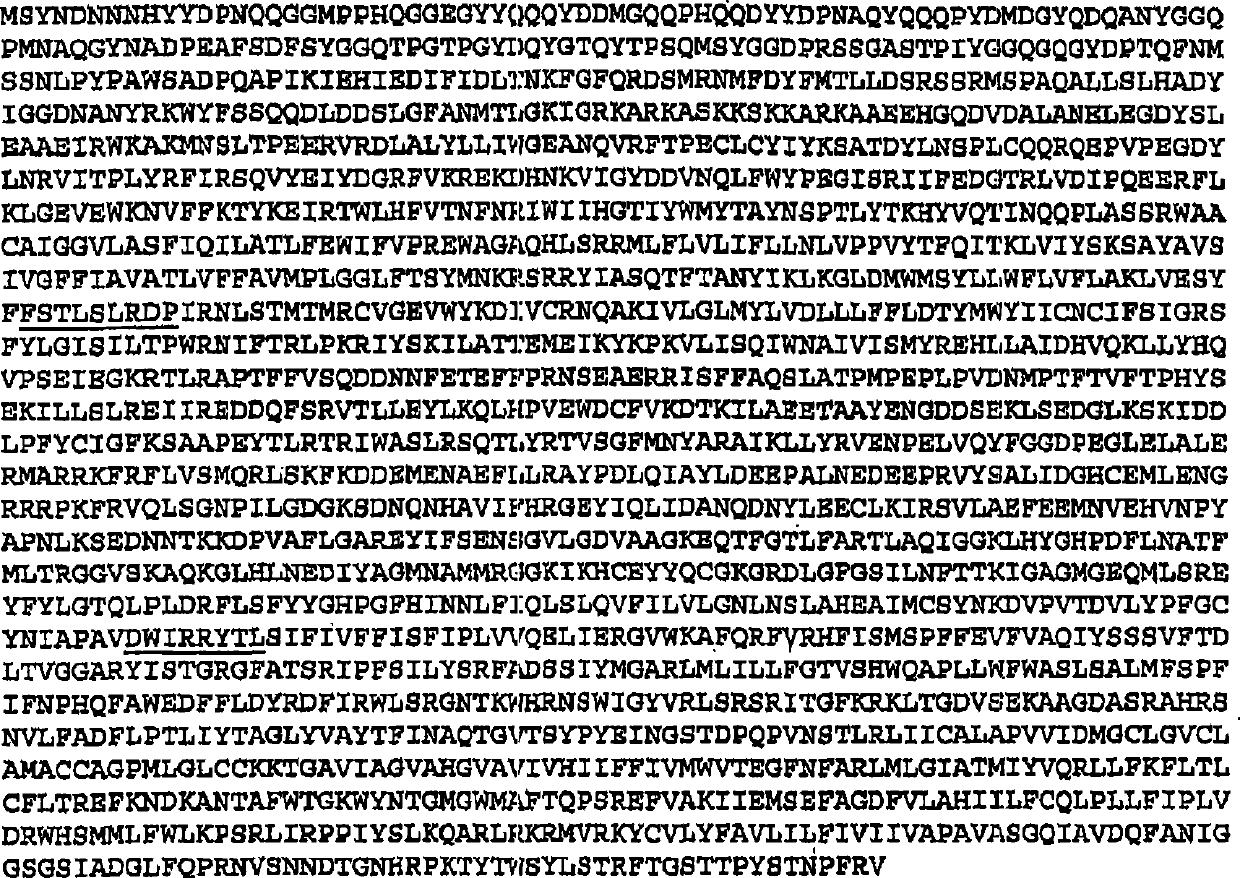Assays for resistance to echinocandin-class drugs
A technology of echinocandin and detection method, which is applied in the field of fungal nucleic acid detection method, can solve the problems of decreased sensitivity of candida and low inhibitory concentration value, etc.
- Summary
- Abstract
- Description
- Claims
- Application Information
AI Technical Summary
Problems solved by technology
Method used
Image
Examples
Embodiment 1
[0061] Nucleic acid amplification of relevant fragments of the CaFKS1 gene and cycle sequencing of identifying mutants used in conjunction with it have been successfully performed using 4 different strains. A CaFKS1 (approximately 450 bp) fragment was amplified from genomic DNA of strains CAI4-R1, NR2, NR3 and NR4. Based on the sequence of CaFKS1 (GenBank Accession No. D88815), the sense and antisense primers used in PCR were 5'-GAAATCGGCATATGCTGTGTC-3' and 5'-AATGAACGACCAATGGAGAAG-3', respectively. The PCR product was cloned into pCR2.1 (Invitrogen) and the DNA sequence was determined. For Candida clinical isolates, 5′-CATTGCTGTGGCCACTTTAG-3′ and 5′-GGTCAAATCAGTGAAAACCG-3′ were used as forward and reverse primers, respectively, to amplify most of the CaFKS1 ORF (about 2.6 kb) for DNA sequence analysis. In addition to the above-mentioned first target region of CaFKS1 (consistent with 1921st to 1947th coding nucleotides), this fragment includes the second target nucleotides fr...
Embodiment 2
[0063] DNA sequence analysis using nucleic acid amplification and cycle sequencing methods can be used as a stand-alone detection technique or as a control to evaluate probe-based assays.
[0064] C. albicans chromosomal DNA was extracted from cells grown overnight in liquid YPD medium using the Q-Biogene FastDNA kit (Q-Biogene, Irvine, CA). PCR experiments were performed on an iCyclerthermocycler (Bio-Rad Laboratories, Hercules, CA). Using primers CaFKS1-F1719 and CaFKS1-R2212 ( Figure 4 ) amplifies the region of CaFKS1 designated HS1. Each 100-μl PCR reaction system contained two primers at 0.25 μM, 2.5 U of iTaq DNA polymerase (Bio-Rad Laboratories, Hercules, CA), 0.5 mM dNTPs, 50 mM KCl, 4 mM MgCl 2 , 20mM Tris-HCl, pH=8.4, about 50ng of Candida albicans chromosomal DNA. The cycle conditions were 1 cycle, 95°C for 3 minutes; 35 cycles, 95°C for 30 seconds, 55°C for 30 seconds, and 72°C for 1 minute; 1 cycle, 72°C for 3 minutes. PCR products were purified using Montage...
Embodiment 3
[0068] It has been reported that three CaFKS1 DNA sequences with GenBank accession numbers D88815, AF027295 and CA2043 were used for FKS1 molecular beacon and primer design. The design of primers and probes for detection is known in the art. A number of published documents are available to assist the researcher. Additional computer software packages are available to increase efficiency and reduce the need for trial-and-error adjustments (see Example 4). We use this package. Molecular beacons and DNA primers ( Figure 4 ). Preset software parameters are suitable for the construction of all molecular beacons and primers. With the fluorophores 5-carboxyfluorescein (FAM) and 6-carboxy-2′,4,4′,5′,7,7′-hexachlorofluorescein (HEX) at the 5′ end and dabcyl at the 3′ end Label molecular beacons. Molecular beacons and primers were purchased from Biosearch Technologies (Biosearch Technologies, Novato, CA). The hybridization properties of CaFKS1 allele-specific molecular beacons hy...
PUM
 Login to view more
Login to view more Abstract
Description
Claims
Application Information
 Login to view more
Login to view more - R&D Engineer
- R&D Manager
- IP Professional
- Industry Leading Data Capabilities
- Powerful AI technology
- Patent DNA Extraction
Browse by: Latest US Patents, China's latest patents, Technical Efficacy Thesaurus, Application Domain, Technology Topic.
© 2024 PatSnap. All rights reserved.Legal|Privacy policy|Modern Slavery Act Transparency Statement|Sitemap



